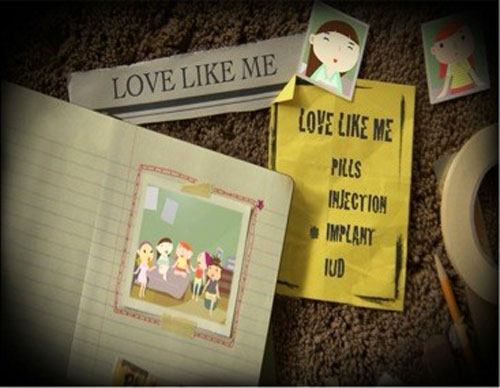
Education and outreach materials used in the HIV-NAT study.
Access to antiretroviral therapy is allowing perinatally infected children to grow into healthy adolescents and adults. However, despite the fact that over 25% of people living with HIV globally are under 24, pediatricians are often not trained to discuss sexual and reproductive health with HIV-positive adolescents, adult family planning services do not cater to them, and there is little published research on which models of reproductive health work best for them. TREAT Asia is supporting a study led by a team at HIV-NAT/Thai Red Cross AIDS Research Centre in Bangkok and funded by the ViiV Healthcare Paediatric Innovation Seed Fund that is aiming to develop a model for providing quality, comprehensive reproductive health services for HIV-positive female adolescents in Asia.
According to several recent studies, approximately 80% of pregnancies among adolescents living with HIV are unintended, and in one study of HIV-positive individuals aged 16–25 in Bangkok, nearly 50% reported using condoms inconsistently, reflecting the need for better reproductive health education for the population. “In this digital era, adolescents have more opportunity for sexual exploration and intimate relationships,” says Phiangjai Boonsuk, TREAT Asia education project manager. “And regardless of their HIV status, all adolescents have the right to appropriate information about sexual and reproductive health and safer-sex methods.”
The HIV-NAT study is focusing on assessing the effectiveness and uptake of dual contraception among HIV-positive adolescents. Dual contraception pairs a male or female condom to prevent STI transmission with a long-term contraceptive method to prevent unintended pregnancy. The contraceptive options offered in this study include oral pills, an injectable hormone known as DMPA, a hormonal implant, and an intrauterine device. Preventing unintended pregnancies will reduce the likelihood of an adolescent transmitting HIV to her baby and also to her sexual partners, as pregnancy may increase HIV infectivity.
The study has enrolled approximately 200 sexually active, HIV-positive young women under the age of 25 at four sites in Thailand. During their first visit, the participants receive age-appropriate reproductive health education that includes a cartoon featuring five Thai adolescent females agreeing that love and sex can be enjoyable with HIV, but that you need to protect yourself and those you love; brochures that explain the advantages and disadvantages of each method of dual contraception; and individual counseling from a nurse. The young women are then offered the contraceptive method of their choice free of charge. The model also includes regular follow-up visits to help the participants manage side effects, problems with adherence to their contraceptive choice, or other issues.
“After the health education, some girls chose to only use a male condom, and we respect their preference,” says Dr. Nadia Kancheva Landolt, the lead investigator of the study. “In the end, the most effective method is the one that works for the girl.” Approximately 50% of the participants initially opted for a dual method, but the team hypothesizes that more of the women will adopt it as the study continues and the young women participate in more counseling and risk-reduction sessions.
In addition to developing an education and counseling model, the study will also look at any effect hormonal therapies may have on HIV disease progression or interactions they may have with antiretroviral therapy. The team will also assess patterns of sexual activity and risk, and plans to have its first complete analysis by late 2015.